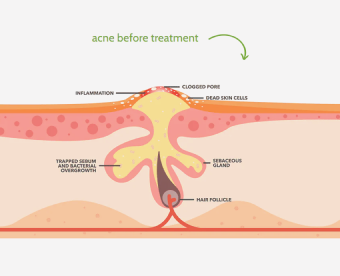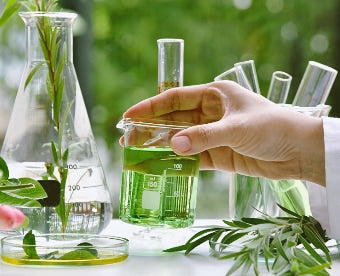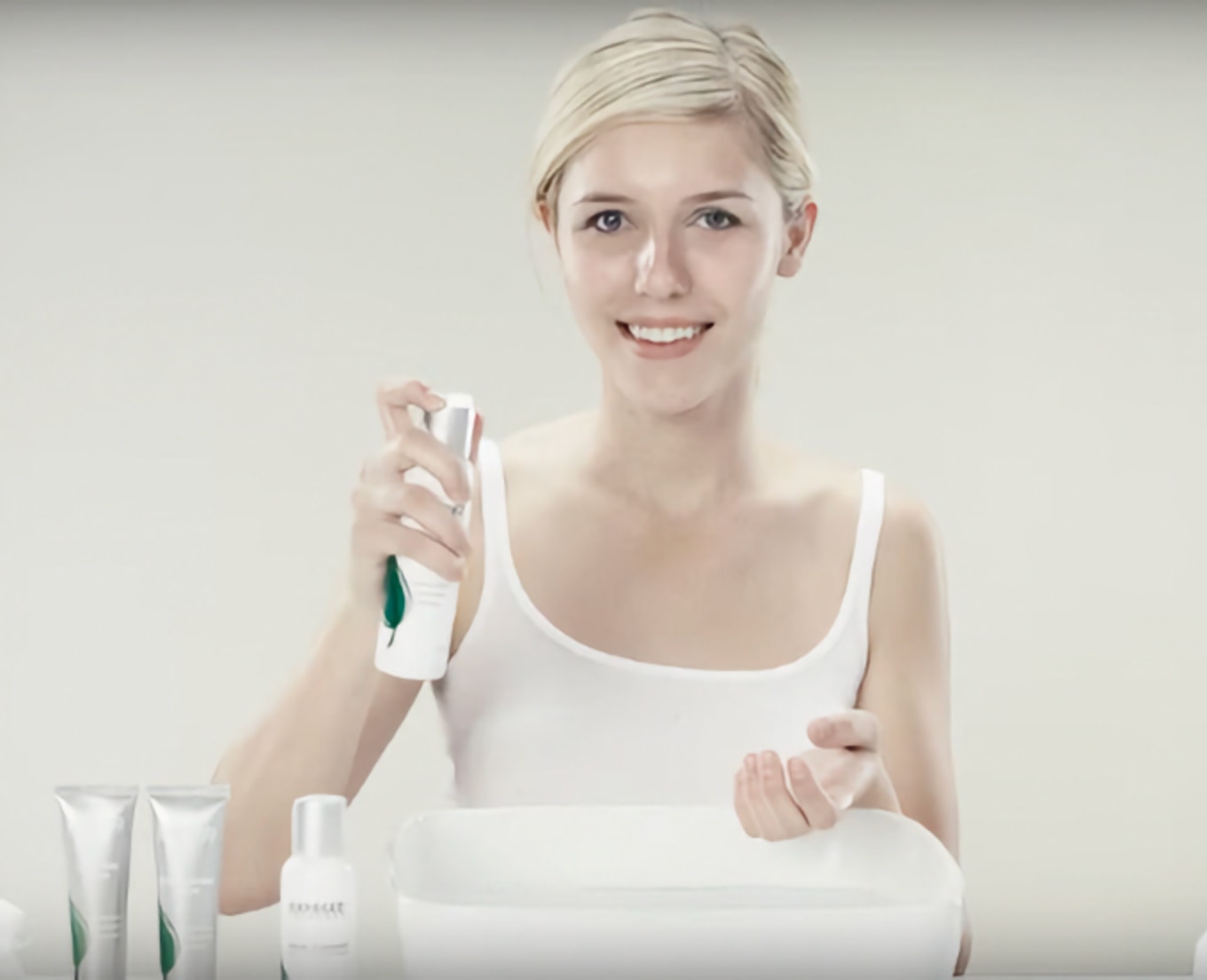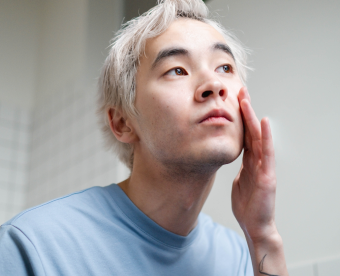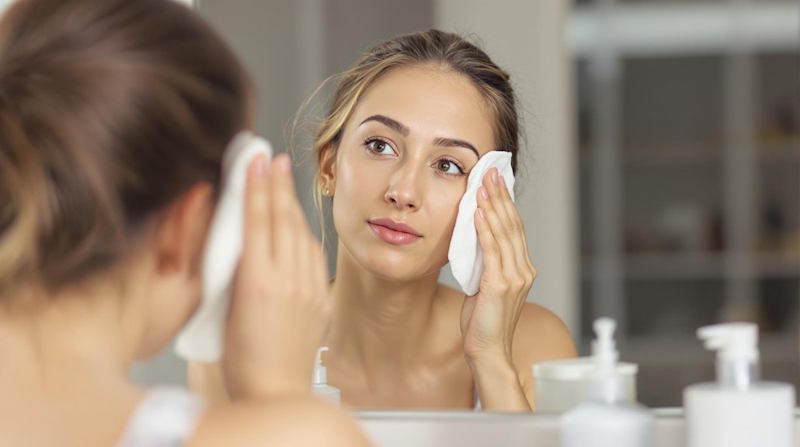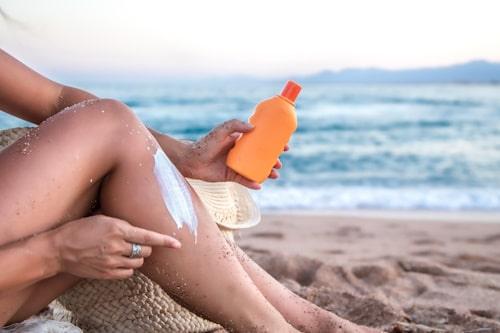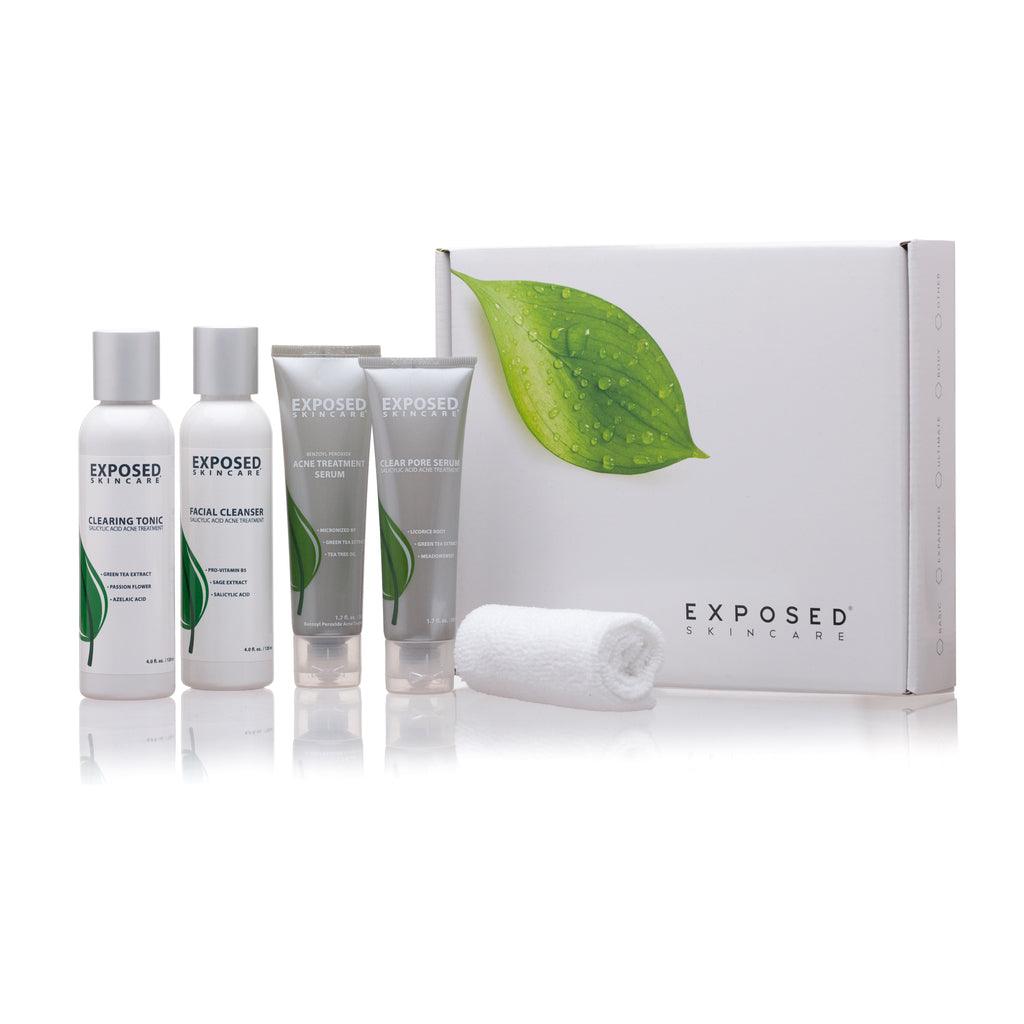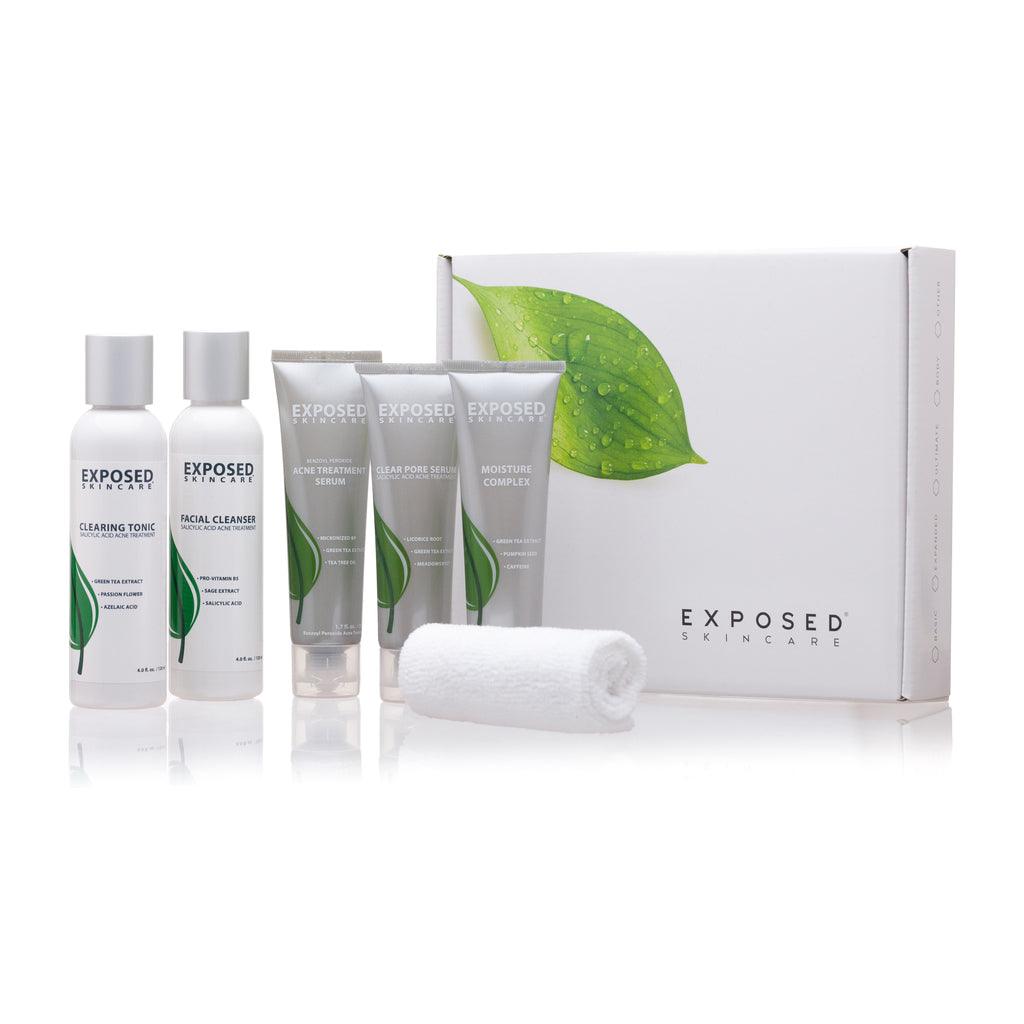You may have seen or heard about liquid chlorophyll as a solution for skin health and general wellness, but just how much actual information is there to prove it?
No research supports the claim that chlorophyll is good for acne. Limited studies show that chlorophyll may have some health benefits, but its ability to heal the skin and prevent breakouts is not supported by science. Drinking chlorophyll may seem like the key to detoxing your skin, but it can actually cause long-term harm to your skin and make it far more sensitive.
Even if a naturally-derived substance like liquid chlorophyll can have some perks for your body, it's more of a support tool than an actual problem-solver. To treat your skin concerns, you'll need a holistic, thoughtful skincare routine for acne that contains ingredients that are proven to get the job done, all without harming the skin.
Also read: How to choose the best acne treatment

What Exactly is Chlorophyll?
Chlorophyll is a naturally-occurring compound that gives plants their green pigment. It also helps plants absorb energy from the sun as they undergo photosynthesis.
As a result, chlorophyll is abundant in green vegetables and plants; the greener the plant, the higher its chlorophyll content.
Chlorophyll has antioxidant properties and health benefits that are still being explored, especially regarding its potential ability to help lessen the risk of certain cancers.
But chlorophyll is just one part of the overall habits and lifestyle choices that allow for a healthy body and acne-free skin. There isn't a single ingredient that can eliminate your acne alone. Acne has various causes, so it requires various ingredients and habits to get rid of it.

The Rise of Chlorophyll Water and Supplements
Thanks to its perceived ability to reduce inflammation, hyperpigmentation, and acne scarring, chlorophyll and chlorophyll water have been boosted to superstardom on social media.
Skincare aficionados on TikTok, Instagram, and other platforms often tout chlorophyll as a solution for stubborn, acne-prone skin.
And, to be fair, using its water-soluble form, chlorophyllin, to "detox" the body isn't anything new -- natural remedies like these have been around for decades. But the invention of social media makes it easy for them to take center stage and for misinformation about their effects to spread like wildfire.
From chlorophyll water to topicals and even oral supplements, there's no shortage of products out there that claim to be able to treat acne and detox the skin.
But the hard truth is that there is no product that's enough on its own to get rid of your skincare concerns, no matter how natural it is.
Does Chlorophyll Help with Acne?
The short answer to this question is no, but when we peel back the surface to look at the details of how chlorophyll interacts with the body, we can see that it has some properties that have led to its status as a skincare solution.
Some research, for instance, suggests that topical chlorophyll can reduce inflammation thanks to its antioxidant properties. It may even act as an anti-bacterial agent.
But, there simply aren't studies showing that these effects are significant for treating acne vulgaris or improving skin conditions over time.
Sometimes, chlorophyll is used as a photosensitizer alongside blue or red light in specific clinical treatments, like photodynamic therapy, to reduce acne lesions, but these procedures are conducted by a healthcare professional in a controlled environment.
The photosensiziting effects (which lead to heightened sensitivity to light, specifically from the sun) of chlorophyll are actually the biggest culprit of its side effects and risks.
A build up of chlorophyll or chlorophyllin in the skin means that photosensitivity spikes in general, leaving you prone to damage and inflammation caused by even very little sun exposure.
So, in an attempt get rid of acne with chlorophyll, you'll likely halt your progress and even make your skin worse.
Does Liquid Chlorophyll Help with Acne?
Liquid chlorophyll carries the same risks that other chlorophyll products do, but these ultra-concentrated products can be even more aggressive on your skin.

There is some truth to the alleged benefits of chlorophyllin: it can actually help mend the damage caused by free radical toxins and limit their bioavailability (how much is absorbed into the body).
It may also help reduce DNA damage, which has led to an increased interest in chlorophyll for cancer treatment or prevention.
Despite these promising leads, there aren't any studies to suggest that liquid chlorophyll does anything for acne.
Even if it does successfully limit the amount of toxins in your body, toxins aren't the cause of your breakouts. Chlorophyll water can't get rid of acne because it doesn't actually address the problems that lead to it in the first place.
What it can lead to, though, is a photosensitive reaction characterized by redness, itching, and irritation.
Or, in more severe cases, a build-up of chlorophyll can cause pseudoporphyria, a condition that causes painful blisters to form on sun-exposed skin. These blisters can scar or cause rashes, milia (tiny white bumps on the skin), and erosions.

How to Prevent and Treat Acne the Right Way
If drinking chlorophyll water isn't the solution to your stubborn acne, what is? To see real progress in the long term, you'll need to address each of the main causes of acne, which include:
-
excess sebum (oil) production and dead skin cells
-
too much acne-causing (P. acnes) bacteria
-
inflammation

As dead skin cells and extra oil, grime, and dirt clog your pores, they also act as a food source for acne-causing bacteria on the skin. This process can irritate and cause inflammation of the skin.
And, to make things worse, as bacteria reproduce and cause infection, your body creates an inflammatory response that traps them deep inside your pores.
To treat and prevent breakouts, then, you'll have to combat each of these interlocked causes.
You can do that with proven acne-fighting ingredients that aren't harsh on the skin and won't have lasting side effects.
Keep Sebum Levels Under Control
To avoid clogging your pores in the first place, opt for products that have gentle exfoliating ingredients, like salicylic acid, that can help keep your skin clear and fresh.
Our Clear Pore Serum, formulated with salicylic acid, green tea extract, and licorice root extract, has all you need to manage sebum levels, unclog pores, and help your skin heal for a brighter, smoother complexion.
Balance Acne-Causing Bacteria
Bacteria is always on your skin and it actually does a lot to keep you healthy, but too much of a certain type of bacteria can overwhelm your body and cause your immune system to kick into high gear.
That's why the Exposed Clearing Tonic is created using healing antioxidants and azelaic acid to kick pore-clogging impurities, which bacteria feed and thrive on, to the curb.

Avoid Inflammation
Inflammation can cause swollen, painful blemishes, but it can also be the catalyst that leads to the closing and clogging of pores in the first place.
Drinking chlorophyll water to reduce inflammation or detox the skin can be paradoxical because of its tendency to increase sensitivity.
To reduce redness, look instead for gentle ingredients that can calm inflammation and won't further irritate your skin. Caffeine and antioxidant-rich pumpkin seed, both of which can be found in our Moisture Complex, are great options.

